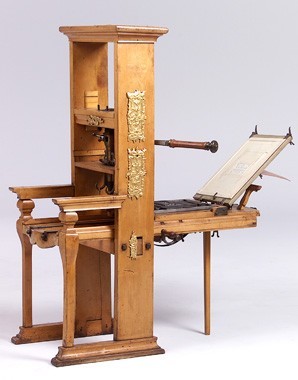The textualization of the world
Innovations in writing and materials made possible the rapid production of documents. This was urgently needed for the increasing demands of administration.
In the thirteenth century a new kind of script changed writing habits: instead of the Carolingian minuscule, which lives on in the Western lowercase alphabet, people started using the Gothic miniscule in manuscripts. Gothic cursive in particular made it possible to write more quickly and thus led to more rapid distribution of greater quantities of texts. Vernacular language was also textualized. This posed a problem, in that the stock of written characters had to be adapted to the sounds. These were rendered with combinations of letters. German replaced Latin as the language of documents and predominated in the textual culture of public life.
This simplified form of script increased access to the understanding of written symbols and writing, with the result that the clergy was no longer the only literate stratum in society. In the fourteenth century another innovation followed: paper, made from rags, replaced the more expensive parchment, produced from animal hides, as the supporting medium. During the course of the fifteenth century the price of paper sank, while its use rose in particular through the invention of the printing press.
As a result of these developments literacy spread during the late Middle Ages. In the legal sphere it guaranteed long-term legal security: Germanic law was traditionally oral. Now the legal process was set down in writing at all stages and was based on fixed written sources. Textualization thus guaranteed the truth and validity of depositions.
An important motor for spreading the knowledge of script and writing was the administrative apparatus of local feudal rulers and the urban centres: specially trained ‘officials’ instructed in law produced documents, in particular registers and records, which today serve as valuable sources for historians. In the towns and cities administration became increasingly important in order to regulate social interaction and economic activity in burgeoning populations. Economic developments such as the increase in long-distance trade also fostered literacy, as evidenced by accounts books from the fourteenth century: numeracy, writing and reading were essential preconditions for success in commerce.





















